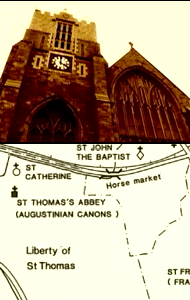Exercise for Valentina Nisi'sMedia Portrait of the LibertiesDescriptionMedia Portrait of the Liberties (MPL) presents a multimedia map of the Liberties area in Dublin. MPL was generated by local residents, who submitted stories, anecdotes, or images to an online database via a phone or gps device. Each submission relates to a particular area, intersection, building, or phenomena in the Liberties. The final product is not a cohesive, linear map. Instead, the MPL is a fragmented map that has different kinds of information and material, depending on the location that the visitor chooses. PurposeThis exercise will expose students to alternative forms of cartography (see glossary) made possible by new media. Instructions/NotesMPL is a Windows application. To install MPL, click "Launch Project" and run the "grok-mpl-setup.exe" installer. To run the application, click "Start Menu -> Programs -> Grok -> Media Portrait of the Liberties". When the application starts, it will prompt you with a File Open dialog. Navigate to "Program Files\GROK\Media Portrait of the Liberties" and select the "liberties" text file. Click Open and the application will launch. Media Portrait of the Liberties requires speakers or headphones. MaterialsThe educator should prepare multiple maps, hung or displayed for discussion purposes. In addition, the educator should acquire a large map of the local area and smaller photocopies for the students. Exercise
|






